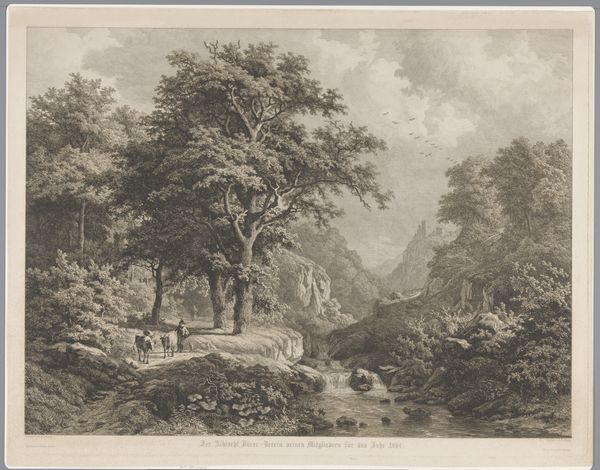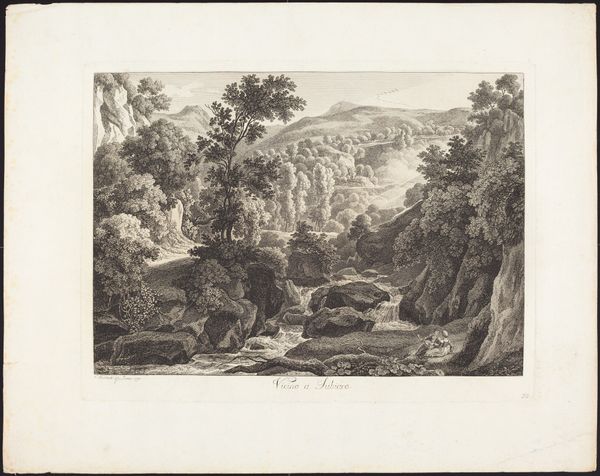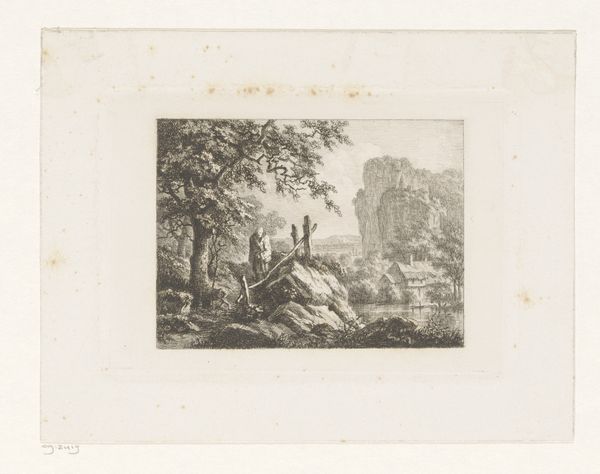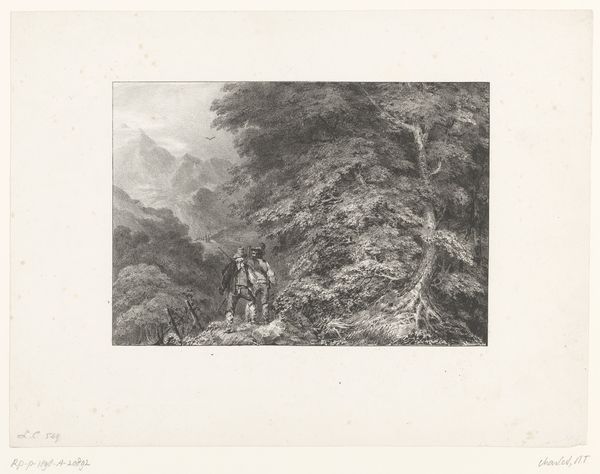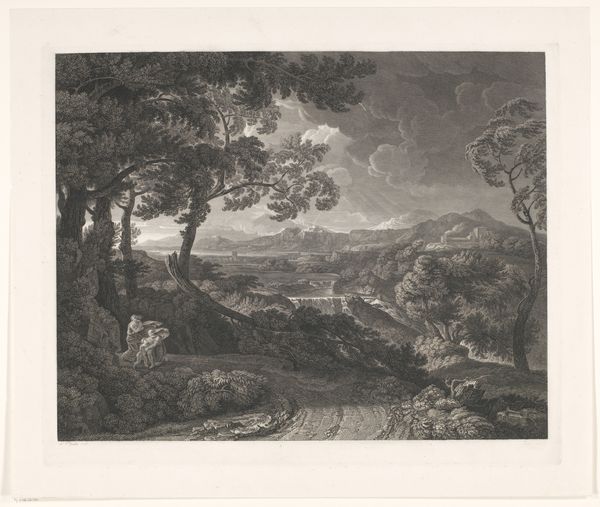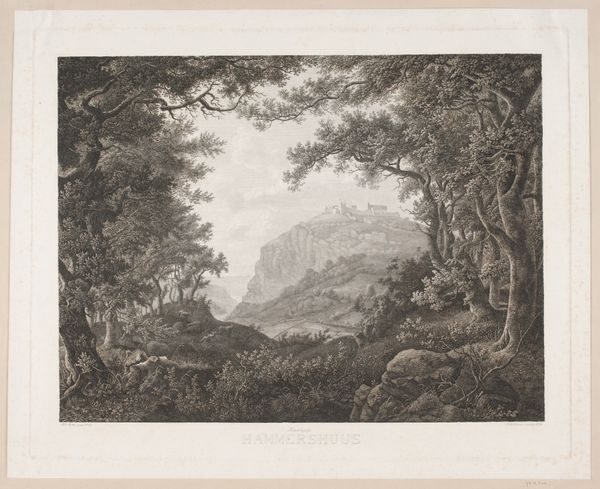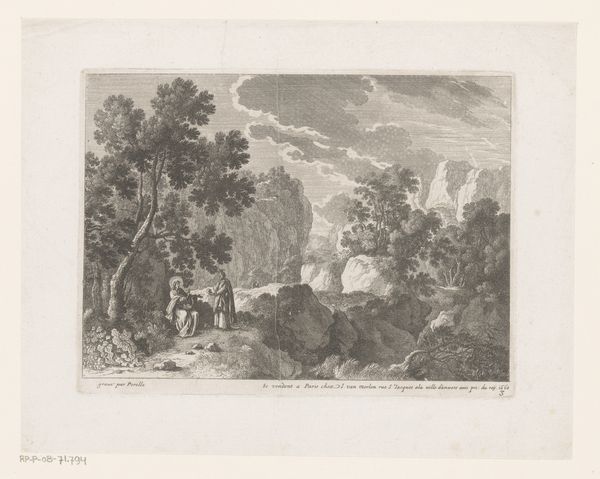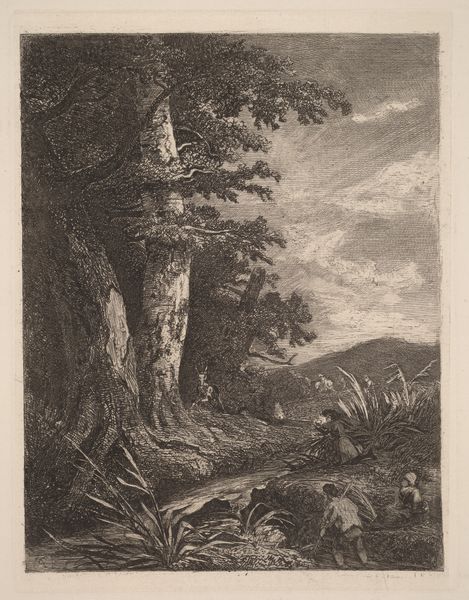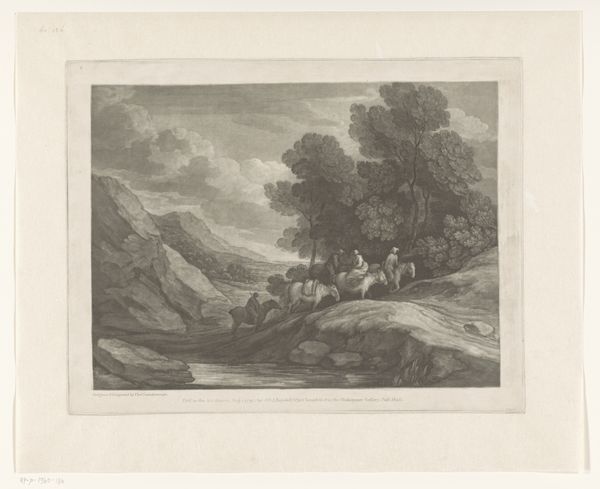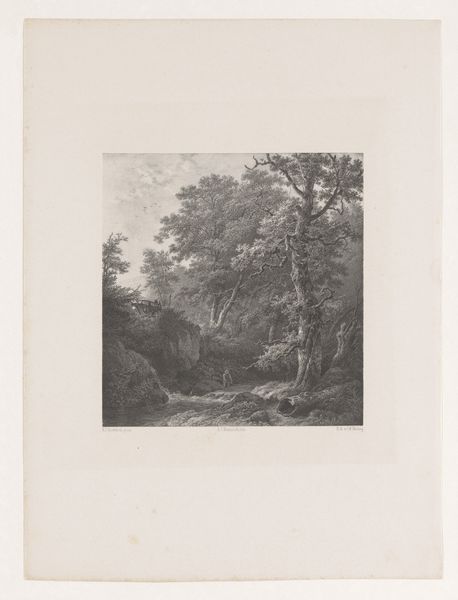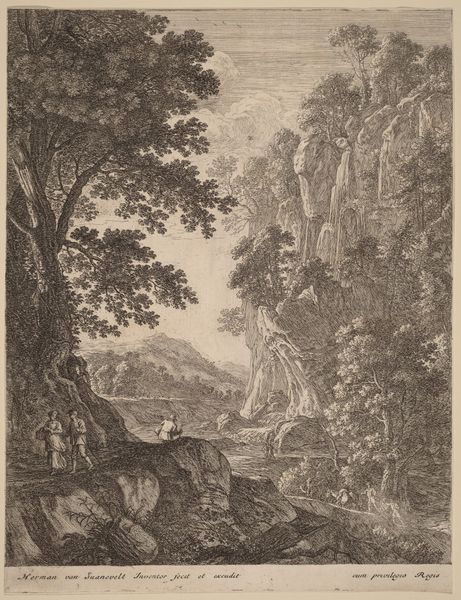
Dimensions: height 440 mm, width 515 mm
Copyright: Rijks Museum: Open Domain
Editor: So, here we have Auguste Numans’ "Mountainous Landscape with Bird Flying Through a Ravine," created sometime between 1833 and 1883 using etching and engraving. I'm struck by how dramatic yet desolate it feels. All that meticulous detail really amplifies the wildness, wouldn't you agree? What symbols or visual cues stand out to you in this piece? Curator: It's interesting that you focus on desolation. The imagery of Romanticism is about the sublime experience. What symbols of death and rebirth can we observe? Do you see how the fallen tree becomes a powerful symbol of time's passage and resilience of nature? Notice the lone bird. In many cultures, a bird is associated with the soul, a messenger between worlds, perhaps offering a sense of hope amidst what seems like decline. Editor: That's fascinating. I initially saw the bird as a tiny, almost insignificant detail against this imposing landscape. But you're right; it does add a glimmer of hope, a sense of continuity. It's as if life persists even amidst decay. Curator: And consider the ravine itself – a kind of wound in the earth. Wounds, both literal and symbolic, are places where healing and transformation can occur. So the image isn't only about loss but a transition from the old into something new, echoed through this flight of the bird. What future trajectory can be extracted here, do you think? Editor: I get it. What I initially perceived as desolate and bleak actually has layers of symbolism representing transformation and hope. Curator: Indeed. By understanding the symbolic language, we can interpret visual cues and dive deeper into how humans respond to cultural change. Editor: That’s a very powerful reading. Thank you! It changes my whole understanding of the print.
Comments
No comments
Be the first to comment and join the conversation on the ultimate creative platform.
